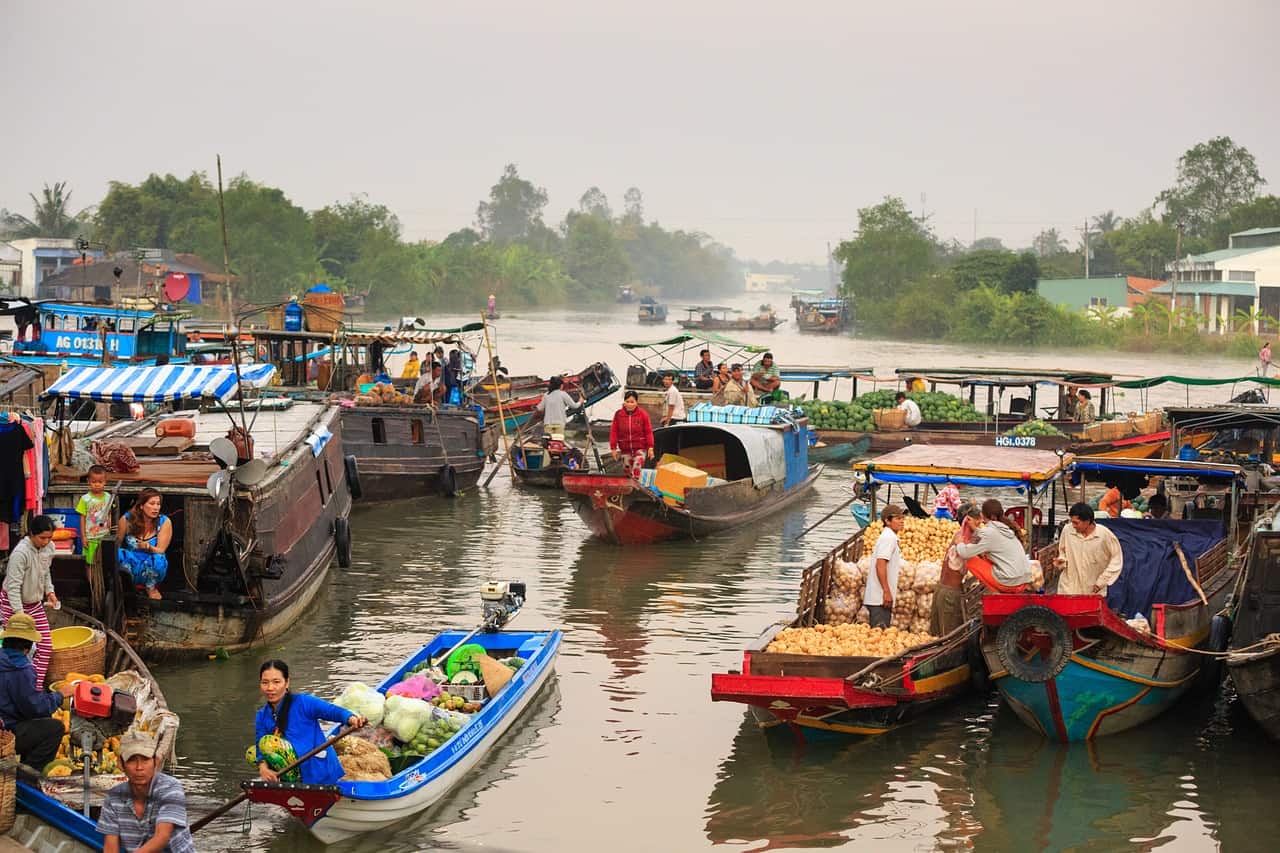By the middle of the century much of the delta will have sunk below sea level unless the trend is reversed, scientists say.
The Mekong Delta in Vietnam is a scenic region home to about 17 million people, but this economically vital area of the Southeast Asian nation is sinking fast. A primary reason: large swathes of land there have been poldered for agriculture and aquaculture.
In fact, say scientists, by the middle of the century much of the delta will have sunk below sea level unless the trend is reversed.
Two scientists from the Wageningen University & Research and Utrecht University in the Netherlands have reached this conclusion after examining how the delta will develop over the next three decades. They did so through computer modeling that accounted for variables such as land subsidence, rises in sea level and sediment shortages.
Already the delta is only around a meter above sea level on average, they report, but large areas in it are sinking as a result of groundwater extraction, the depletion of river sediments and rising sea levels.
“We saw that the delta will likely sink very fast compared to sea level,” notes Frances Dunn, a researcher at Utrecht University and one of the authors of a new study. “For the future of the people who live and earn their living there, these high rates of relative sea-level rise are worrying.”
The changes are mainly driven by manmade causes whose impacts are having increasingly noticeable effects, the scientists say.
“The delta sinks as a natural process, but in recent years land subsidence has been drastically accelerated by humans due to unsustainable groundwater extraction,” explains Philip Minderhoud, an assistant professor at Wageningen University & Research who was the paper’s other author.
“This combination of land subsidence and sea-level rise is what we call ‘relative sea-level rise,’ and this is what people in the delta experience,” he adds.
One way of mitigating the process could involve artifically accumulating sediment at certain locations in the delta so as to raise it, the experts say.
“For example, we looked at what would happen if you focused on sedimentation around the city of Can Tho. Even then, you can only protect one side of the city with sediment because there is a river on the other side of the city, and the rest of the delta sinks more because it won’t receive any river sediment,” Dunn explains.
And there is worse news for locals in the area, which is that “there is simply too little sediment available to compensate for how fast the delta sinks relative to sea level,” in the words of Minderhoud.
That is why a workable strategy would be to supplement fluvial sendiment with measures to retain organic material from the cultivation of rice and other crops while ensuring that further land subsidence ceases. This could gain precious time for the delta to adapt in the face of rising sea levels driven by climate change.
“[W]ith current rates of subsidence and sediment starvation, fluvial sediments alone can only preserve elevation locally, even under optimistic assumptions, and organic sedimentation could potentially assume a larger role,” the scientists observe in their paper.
“While sedimentation strategies alone have limited effectiveness in the present context, combined with enhanced organic matter retention and interventions reducing anthropogenic-accelerated subsidence, they can considerably delay future relative sea-level rise, buying the delta crucial time to adapt.”
This story first appeared on Sustainability Times
South Africa Today
© 2022 Sustainability Times.
This article is licensed under a Creative Commons Attribution-ShareAlike 4.0 SA International License.












